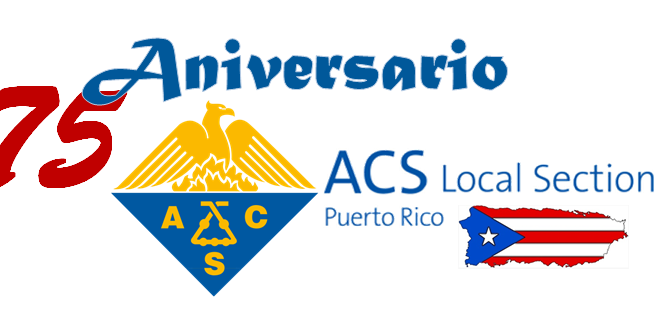University of Puerto Rico
Mayagüez Campus
Chemistry Department
Departmental Seminar
Celebrating the 75th. Anniversary of the ACS of Puerto Rico
by
Ms. Jennifer Vargas Santiago
UPRM PhD. Candidate
Applied Chemistry and Biophisics
Friday, Dicember 9 th. , 2022
10:30 am
Link: Reunión de Microsoft Teams
¨Physiological effects of hydrogen sulfide (H2S) ¨
Abstract
Extensive scientific data have shown that the physiological effects of hydrogen sulfide (H2S) depend on its concentrations in the body. However, the lack of an accurate method of quantification or biomarker has limited the discovery of the beneficial and detrimental quantities associated with various diseases. Research on the therapeutic use of H2S for various clinical applications is also limited by the fear of reaching dangerous thresholds of H2S concentrations in the body. This project provides the basis for developing different media in which H2S can be trapped and quantified in biological samples. Recombinant hemoglobin I (rHbI) from the clam Lucina pectinata has a high affinity for H2S, which makes it an attractive trapping medium. Therefore, rHbI was encapsulated in a silicon-based polymeric matrix and a three-dimensional collagen scaffold. Spectroscopic studies of rHbI encapsulated in tetramethyl orthosilicate (TMOS) demonstrate the ability of this hemeprotein chromophore to bind H2S. Fourier transform infrared (FTIR) and attenuated total reflection (ATR) spectroscopy analysis showed that the alpha helix is the predominant secondary structure, consistent with the values reported in the literature for the crystallographic structure of native HbI. These results revealed that encapsulation preserved the chromophore structure even in a crowded environment. Recombinant HbI immobilized in collagen also showed the ability to bind H2S by UV-Vis spectroscopy. Diffuse reflectance measurements transformed to Kubelka Munk units, analogous to UV-Vis, showed a linear correlation (R2=0.9987 and 0.9916) between absorption and concentrations of rHbI-H2O and rHbI-H2S, respectively, in a range of 1 to 35 μM. Therefore, the concentration of H2S can be determined by quantifying the rHbI-H2S complex, where one molecule of hemeprotein can bind only one molecule of H2S. The results suggest that rHbI can trap H2S without inducing structural changes. Our study provides insight into a novel method for immobilizing hemoproteins that can be used to develop an H2S biosensor using rHbI as a platform.
ID de la reunión: 229 907 238 42Código de acceso: RKN8zj







